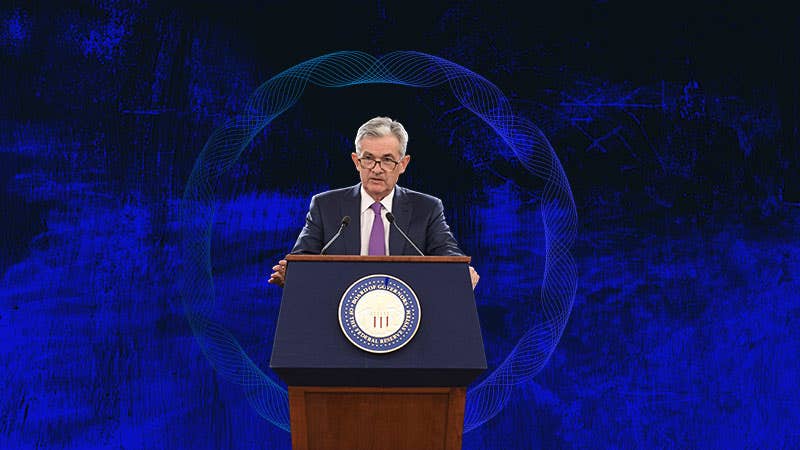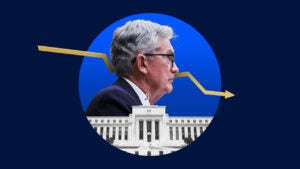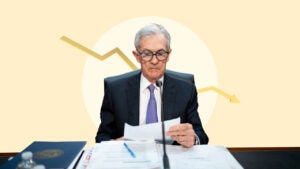Fed forecast survey: Top experts predict borrowing costs will be left alone — for now

The Federal Reserve’s latest interest rate decision looks all but locked in, according to the nation’s leading U.S. central banking experts.
Every economist and financial expert polled for Bankrate’s December 2019 Federal Reserve Forecast survey unanimously predicted that the Fed would decide to leave borrowing costs alone when it finishes up its two-day rate-decision meeting on Wednesday. The experts reported a confidence level of 96 percent.
That means the target range for the federal funds rate would hold between 1.5 percent and 1.75 percent.
Most experts also indicated in their written responses that the Fed would pencil in no additional rate moves for 2020 on its quarterly “dot plot” chart, which shows policymakers’ forecasts for interest rates. That chart, along with the Fed’s economic projections, will be updated following the Fed’s announcement Wednesday.
[READ: 4 themes to focus on at the Fed’s December meeting]
“The Fed has set the bar very high for rate hikes. The bar is also high for a cut in 2020, but less so,” says Alicia Levine, chief strategist at BNY Mellon Investment Management. “In the last meeting, the FOMC said it was holding still on further cuts. We expect this meeting to signal the same since data has been mixed but mostly firming. Any signal on considering further cuts would be a dovish surprise.”
Fifteen experts were surveyed between Nov. 20 and Dec. 3.
Biggest threats to economy: Trade wars, low inflation
The U.S. central bank has lowered rates three times this year, first at its meeting in July – which was the first reduction in more than a decade – and then again in September and October. Powell and other officials on the Federal Open Market Committee (FOMC) have compared the moves to taking out “insurance” on the U.S. economy. Though hiring and employment remains strong, risks threaten to derail them.
The trade war between the U.S. and China has been the biggest threat, with the uncertainty surrounding it stunting business investment and manufacturing activity in the U.S.
Trade uncertainty hasn’t diminished just yet. President Donald Trump on Tuesday said he wasn’t in a rush to close on an initial agreement with China before the election, almost two weeks before a new round of tariffs are set to take effect on consumer goods from the Asian nation. Just a day earlier, the Trump administration proposed levies on $2.4 billion of imports from France.
“Uncertainty around the trade picture has again heightened,” says Yung-Yu Ma, chief investment strategist at BMO Wealth Management. “The U.S. and China may not sign a ‘phase one deal,’ and the U.S. just restored tariffs on steel imports from Brazil and Argentina and is threatening tariff action against France, which itself is threatening to retaliate.”
But not all economists are convinced that it’s time to act just yet. The U.S.-China trade war has proven to be erratic, meaning the situation could change before cuts are warranted.
“If the trade war negotiations remain in question, I’ll be looking for any signal that this would influence the Fed to drop rates in 2020, though such a signal would be highly unlikely,” says Robert Frick, corporate economist at Navy Federal Credit Union. “Given the economy has changed only incrementally since the Fed’s last meeting, it should continue its wait-and-watch-the-data posture.”
Amid the trade concerns, inflation has also been subdued, holding below the Fed’s target of 2 percent for most of the current expansion. Officials in their post-meeting statements for both July, September and October indicated that it was one of the reasons why they’re nudging rates lower.
[READ: Here’s why low inflation has the Fed concerned right now]
“The message will remain that monetary policy remains in a good place, but I will be watching the Fed’s message on the inflation outlook and their evolving thinking on inflation targeting for clues about the timing of future rate moves,” says Scott Anderson, executive vice president and chief economist at Bank of the West.
Powell in October also suggested that the Fed wouldn’t get back to hiking interest rates until inflation perked up.
Still, it’s worth watching whether the Fed signals that it’s willing to withstand higher inflation for the sake of stimulating growth, says William Spriggs, chief economist at the American Federation of Labor Union and Congress of Industrial Organizations.
“The job numbers appear to have stabilized in the last two reports,” Spriggs says. “The important issue will be if the Fed tries to strengthen a forward guidance message that it would be willing to tolerate higher inflation in the short run to keep the momentum of the economy going forward.”
What will cause the Fed to change its outlook?
The October meeting gave Powell an opportunity to walk back expectations that more rate cuts were coming. During the post-meeting press conference, Powell strongly signaled that the Fed was likely done after three cuts, by saying policy was now in “a good place” unless the economy looked like it was weakening enough to cause “a material reassessment” of the outlook.
Economists are hoping to gain a better understanding of what those significant developments could entail, according to Bankrate’s poll.
“Anything that gives a better sense of what the FOMC considers a ‘material’ change in the outlook will be of utmost interest at the next meeting,” says Sarah House, senior economist, Wells Fargo Securities.
But even though the dot plot won’t indicate any rate moves, Fed officials might be forced to reduce rates again down the road, according to Bankrate’s Fourth-Quarter Economic Indicator survey, a separate poll conducted in November. Nearly two-thirds (or 62 percent) estimate that the Fed will cut rates again in 2020, with 43 percent predicting two cuts and 19 percent expecting one cut.
What this means for you
Still, a no-move meeting is a win for savers, after bearing the brunt of three cuts this year. With the Fed on hold for the foreseeable future, yields on savings accounts and certificates of deposit (CDs) likely won’t fall much lower.
[READ: 5 ways the Fed’s interest rate decisions impact you]
Use Bankrate’s tools to find the best account on the market for you, many of which are still offering yields above inflation. Consider locking in a short-term CD now, to insulate yourself from any future cuts.
At the same time, three cuts mean borrowers have still felt a reprieve. Continue to make debt repayment – especially high-cost debt – a priority.
“Chairman Powell is likely to lay out a similarly high bar for future policy moves as he presented in October,” says Ben Ayers, senior economist at Nationwide Insurance. “The FOMC would need to see signs of a sharper slowdown from the economy in order to cut interest rates again, while a significant upward shift in inflation would be needed for the committee to raise interest rates. This would reiterate that the base case for the FOMC is an extended period of keeping the fed funds rate at its current range.”
Methodology
Bankrate’s December 2019 Federal Reserve Forecast survey of economists and financial experts was conducted from Nov. 20-Dec. 3 via an online poll. Survey requests were emailed to potential respondents nationwide, and responses were submitted voluntarily via a website. Responding were: Brett Ryan, senior U.S. economist, Deutsche Bank Securities; Alicia Levine, chief strategist, BNY Mellon Investment Management; William Spriggs, chief economist, AFL-CIO; Yung-Yu Ma, chief investment strategist, BMO Wealth Management; Scott Anderson, EVP & chief economist, Bank of the West/BNP Paribas Group; Robert Frick, corporate economist, Navy Federal Credit Union; Richard F. Moody, SVP and chief economist, Regions Financial Corporation; Dan North, chief economist, Euler Hermes North America; George Selgin, director, Center for Monetary and Financial Alternatives at the Cato Institute; Steven Skancke, chief economic advisor, Keel Point LLC; Ward McCarthy, chief financial economist, Jefferies LLC; Mike Piershale, president, Piershale Financial Group; Ben Ayers, senior economist, Nationwide Insurance; Sarah House, senior economist, Wells Fargo Securities; and Ken Moraif, CEO and senior adviser, Retirement Planners of America.






